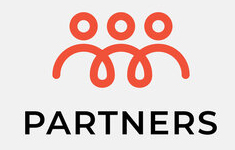
InBOL in One Health Mission
As known Nucleobases, also known as nitrogenous bases or often simply bases, are nitrogen-containing biological compounds that form nucleosides, which, in turn, are components of nucleotides, with all of these monomers constituting the basic building blocks of nucleic acids. ATGC is the foundation of all living organisms. Life is composed of DNA, comprising various genes that form the proteins that regulate all body functions. Genetic information is carried by large molecules known as genes, composed of nucleic acids. Different genes are responsible for the expression of different characteristics of the organism. During the reproduction of the organism, the genes also replicate and thereby pass on the instructions for various attributes to the next generation. Occasionally, there are imperfections, called mutations, in gene replication.
A mutation alters the instructions for one or more characteristics. Some mutations, when expressed, will produce characteristics favourable for the organism; organisms with such favourable genes will reproduce preferentially over those without such genes. Most mutations, however, turn out to be deleterious and often lead to some impairment or death of the organism. The orientation of A, T, G, and C in the long trace of DNA depicts DNA barcoding, in general, to find out species, individuals, inherited diseases, groups, etc. The orientation of A, T, G, and C in the long trace of DNA depicts its actual morphology and also determines the functioning of the living unit “Cell”. Thus the orientation of these 4 letters can be treated like Universal Product Code (barcodes or QR Codes) which gives information about the object to which it attaches. Hence, the term “DNA barcoding” in general to find out species, individuals, inherited diseases, groups, etc. InBOL with its expertise in the DNA barcoding discipline aims to decode the barcode of life, and health care under the umbrella through

1. Disease barcoding of inherited and sporadic disorders which are influenced by gene-environment interactions such as Cancer (Cancer Barcoding), Genetic Eye Disorders (Eye Barcoding), hematologic disorders (Blood Barcoding), Genetic causes of Obesity, diabetes (Endocrine Barcoding), rare diseases.
2. Biodiversity barcoding which is barcoding of flora and fauna for proper cataloging (digital repository) and for formulating future conservation strategies.
3. Agricultural barcoding that will help in proper cataloguing of the consumables leading to better farming and economic approaches
4. Barcodes for authentication of Natural Health Products from Animals/Plants in food security and forensic usage of DNA barcodes in wildlife poaching and forestry conservation.
The cumulative repository and knowledge thus generated through the efforts of InBOL and with collaboration will help in cataloguing diseases, agriproducts, natural medical products and our nature itself at multi-front leading to quicker identification of a challenge in society and develop better counter to the problem.
2. Biodiversity barcoding which is barcoding of flora and fauna for proper cataloging (digital repository) and for formulating future conservation strategies.
3. Agricultural barcoding that will help in proper cataloguing of the consumables leading to better farming and economic approaches
4. Barcodes for authentication of Natural Health Products from Animals/Plants in food security and forensic usage of DNA barcodes in wildlife poaching and forestry conservation.
The cumulative repository and knowledge thus generated through the efforts of InBOL and with collaboration will help in cataloguing diseases, agriproducts, natural medical products and our nature itself at multi-front leading to quicker identification of a challenge in society and develop better counter to the problem.
Our Partners





